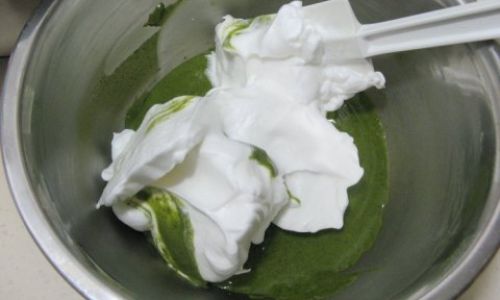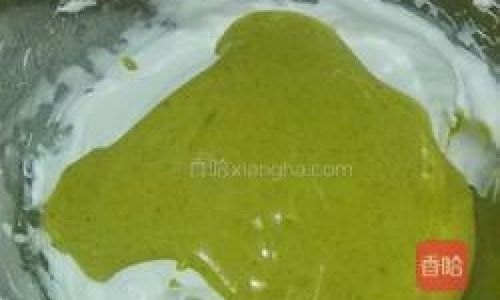Table of content
- Poaching: Gentle Infusion
- Steaming: Pure and Light
- Baking: Caramelized Simplicity
- Pan-Searing: Golden Perfection
- Broiling: Quick and Flavorful
- Herbs: The Green Anchors
- Citrus: Zest and Juice
- Aromatics: The Silent Stars
- Alliums: Sweet and Savory
- Dairy: Creamy Richness
- Briny Accents: Capers, Olives, and Tomatoes
- Nuts and Seeds: Texture and Toasty Notes
- Salt and Pepper: The Basics Done Right
- Acidic Marinades
- Herb-Infused Oils and Butters
- Miso and Umami
- Light Sauces
- Creamy Sauces
- Salsas and Relishes
- Side Dishes
- Mediterranean Magic
- Asian Elegance
- Scandinavian Simplicity
Fish, with its tender texture and mild flavor profile, is a culinary canvas waiting to be adorned with creativity. For those who prefer to avoid spice, crafting a memorable fish dish may seem like a challenge—but it is far from impossible. The key lies in balancing subtle flavors, leveraging fresh ingredients, and employing techniques that enhance rather than overwhelm the natural taste of the seafood. This article explores the nuances of preparing non-spicy fish dishes that are both elegant and satisfying, ensuring every bite leaves a lasting impression.
Understanding the Foundation: Choosing the Right Fish
The journey to a delectable non-spicy fish dish begins with selecting the right protein. Not all fish are created equal, and certain varieties lend themselves better to mild preparations. Opt for white-fleshed fish like cod, tilapia, haddock, sole, or halibut, which boast a delicate flavor and flaky texture. These species absorb seasonings and accompaniments without competing against them, making them ideal for subtle recipes.
Freshness is non-negotiable. Look for fish with clear eyes, firm flesh, and a briny, oceanic scent. Frozen fillets can be excellent alternatives if fresh catch is unavailable, but ensure they are vacuum-sealed and free of ice crystals, which may indicate freezer burn.

Cooking Techniques That Elevate Mild Flavors
The way you cook fish can make or break its taste. Spice-averse dishes benefit from methods that preserve moisture and natural flavor while allowing for infusions of aromatic ingredients.
Poaching: Gentle Infusion
Poaching involves simmering fish in a flavorful liquid, such as court-bouillon (a broth of water, vegetables, herbs, and vinegar or wine). This technique imparts moisture and subtle seasoning without masking the fish’s essence. For a Mediterranean twist, poach fillets in a mixture of white wine, lemon slices, garlic, and fresh thyme. Serve the fish atop a bed of sautéed spinach, drizzled with the poaching liquid reduced to a silky glaze.
Steaming: Pure and Light
Steaming retains the fish’s integrity while infusing it with the fragrance of accompaniments. Place fillets on a bamboo steamer basket over simmering water infused with ginger, lemongrass, or citrus peels. Pair steamed fish with a drizzle of toasted sesame oil, a sprinkle of chopped cilantro, and a side of jasmine rice for a refreshing meal.
Baking: Caramelized Simplicity
Baking allows for controlled cooking and the development of a delicate crust. Nestle fillets in a baking dish with thinly sliced fennel, cherry tomatoes, and olives, then roast until the fish flakes easily. The natural juices mingle with the vegetables, creating a light, savory sauce. A finishing touch of fresh dill and lemon wedges enhances brightness.
Pan-Searing: Golden Perfection
For those who crave a crisp exterior without heat, pan-searing in a mix of butter and olive oil achieves a golden crust while keeping the interior moist. Cook skin-on fillets skin-side down first to render fat, then flip gently. Serve with a beurre blanc sauce made with white wine, shallots, and chilled butter, finished with a grating of nutmeg for warmth.
Broiling: Quick and Flavorful
Broiling under high heat caramelizes the surface rapidly, ideal for thick fillets like salmon or halibut. Marinate fish in a mixture of soy sauce, honey, and garlic, then broil 4–6 inches from the heat until charred in spots. The result is a dish that balances sweet and savory notes without a single chili pepper.
Flavor Pairings: The Symphony of Subtlety
Non-spicy fish dishes thrive on harmonious flavor combinations. Here’s how to build depth without relying on heat:
Herbs: The Green Anchors
Fresh herbs like dill, parsley, tarragon, and basil add freshness and complexity. Chop them finely and fold into a compound butter to melt over grilled fish, or scatter whole leaves over steamed fillets. For a Mediterranean flair, combine mint, oregano, and lemon zest in a gremolata to sprinkle over pan-seared cod.
Citrus: Zest and Juice
Lemon, lime, and orange brighten fish dishes with acidity. A squeeze of juice cuts through richness, while zest contributes floral aromatics. Try a blood orange vinaigrette over seared tuna or a lime-marinated ceviche (using non-spicy ingredients like cucumber and avocado).
Aromatics: The Silent Stars
Garlic, ginger, and shallots form the backbone of many non-spicy sauces. Sauté minced garlic in butter until fragrant, then toss with al dente spaghetti and flaked smoked trout. For an Asian-inspired dish, stir-fry ginger and scallions in sesame oil, then fold in cubed tofu and snap peas alongside seared sole fillets.
Alliums: Sweet and Savory
Caramelized onions, shallots, and leeks add natural sweetness. Braise leeks in white wine until tender, then layer over roasted haddock with a sprinkle of Gruyère cheese. The mild fish absorbs the alliums’ umami, creating a comforting yet refined dish.
Dairy: Creamy Richness
A touch of cream, crème fraîche, or mascarpone can elevate a sauce without spice. Simmer fish fillets in a velvety sauce of saffron-infused cream, finished with a pinch of smoked paprika for smokiness. Alternatively, blend avocado with Greek yogurt, lime juice, and cilantro for a cooling sauce to dollop over grilled mahi-mahi.
Briny Accents: Capers, Olives, and Tomatoes
Ingredients like capers, Kalamata olives, and slow-roasted tomatoes introduce salinity and depth. Toss pasta with cherry tomatoes roasted until bursting, capers, and toasted pine nuts, then top with pan-fried tilapia. The briny notes mimic the complexity of spice without heat.
Nuts and Seeds: Texture and Toasty Notes
Toasted almonds, pine nuts, or sesame seeds add crunch. For a Middle Eastern twist, sprinkle dukkah (a blend of toasted nuts, seeds, and spices) over baked white fish. The nuts’ richness contrasts beautifully with the fish’s tenderness.

Seasonings and Marinades: Subtlety Reigns
Even without spice, seasonings can transform fish into a star. The goal is to enhance, not overpower.
Salt and Pepper: The Basics Done Right
A generous pinch of sea salt and freshly cracked pepper is all some dishes need. For a twist, use smoked salt or pink Himalayan salt to add mineral depth.
Acidic Marinades
Marinate fish in acidic liquids like vinegar, citrus juice, or buttermilk to tenderize and add tang. A 30-minute soak in a mixture of rice vinegar, soy sauce, and honey works wonders for firm-fleshed fish like swordfish.
Herb-Infused Oils and Butters
Infuse olive oil with rosemary or thyme by gently heating the herbs in oil, then straining. Drizzle this over grilled fish. Similarly, blend softened butter with chives, lemon zest, and a touch of Dijon mustard for a compound butter to melt atop baked fillets.
Miso and Umami
White miso paste adds savory depth without heat. Whisk miso with mirin, sake, and a dash of honey, then glaze black cod before broiling. The caramelized exterior and tender flesh create a dish worthy of fine dining.
Sauces and Accompaniments: Elevating the Plate
A well-crafted sauce or side can turn a simple fillet into a feast.
Light Sauces
- Beurre Blanc: A classic French sauce of emulsified butter, white wine, and shallots.
- Lemon Butter Sauce: Reduce lemon juice with cream, then whisk in cold butter for silkiness.
- Herb Sauces: Blend fresh herbs with olive oil, garlic, and a touch of vinegar for a vibrant green drizzle.
Creamy Sauces
- Dill Cream Sauce: Simmer heavy cream with fresh dill, garlic, and a pinch of nutmeg.
- Mustard Sauce: Whisk Dijon mustard into a reduction of white wine and cream.
Salsas and Relishes
- Cucumber-Mint Salsa: Dice cucumber, mint, red onion, and lime juice for a refreshing topper.
- Roasted Red Pepper Coulis: Purée roasted peppers with garlic and olive oil for a smoky-sweet sauce.
Side Dishes
- Grains: Lemon-infused quinoa, saffron rice, or herbed couscous.
- Vegetables: Roasted asparagus with Parmesan, sautéed zucchini ribbons, or buttered peas.
- Salads: Arugula with shaved fennel, orange segments, and a honey-sherry vinaigrette.
Global Inspirations: Beyond Borders
Non-spicy fish dishes exist in countless cuisines, each offering unique flavor profiles.
Mediterranean Magic
Greece’s psari plaki features baked fish with tomatoes, onions, and olives. Italy’s branzino al sale (sea bass baked in salt crust) locks in moisture, while France’s sole meunière pairs pan-fried fillets with brown butter and lemon.
Asian Elegance
Japanese sakana no nimono (simmered fish with daikon and soy sauce) highlights umami. Chinese steamed fish with ginger and scallions is a timeless classic, while Thai pla pao (grilled fish with lemongrass) relies on aromatic herbs, not heat.
Scandinavian Simplicity
Sweden’s gravad lax (cured salmon with dill and sugar) and Norway’s fiskesuppe (fish soup with root vegetables) celebrate purity of flavor.
Presentation and Plating: The Final Touch
A visually appealing dish enhances the dining experience. Use contrasting colors—white fish against green herbs, red peppers, or golden sauces. Garnish with edible flowers, microgreens, or citrus wheels. Arrange components thoughtfully: a fillet atop a swirl of sauce, surrounded by vibrant vegetables.
Common Pitfalls to Avoid
- Overcooking: Fish turns dry and chalky when cooked past 140°F (60°C). Use a thermometer and remove from heat just before it flakes.
- Overcrowding the Pan: This lowers cooking temperature and steams fish instead of searing it.
- Skipping Seasoning: Even mild dishes need salt and acid to prevent blandness.
- Mismatched Techniques: Delicate fillets like sole are better steamed than grilled, which may cause them to stick or break.
Conclusion: The Joy of Subtlety
Non-spicy fish dishes are a testament to the beauty of restraint. By focusing on fresh ingredients, thoughtful seasoning, and gentle cooking methods, you can create meals that celebrate the ocean’s bounty without relying on heat. Whether you prefer the bright simplicity of citrus-steamed fillets or the rich complexity of a miso-glazed cod, the key is to let the fish shine—supported, never overshadowed, by its accompaniments. So the next time you seek a dish that soothes and delights, remember: sometimes, the quietest flavors leave the loudest impression.






0 comments